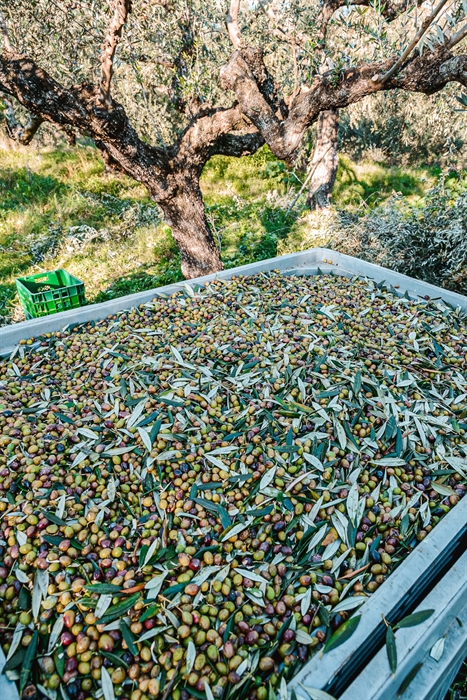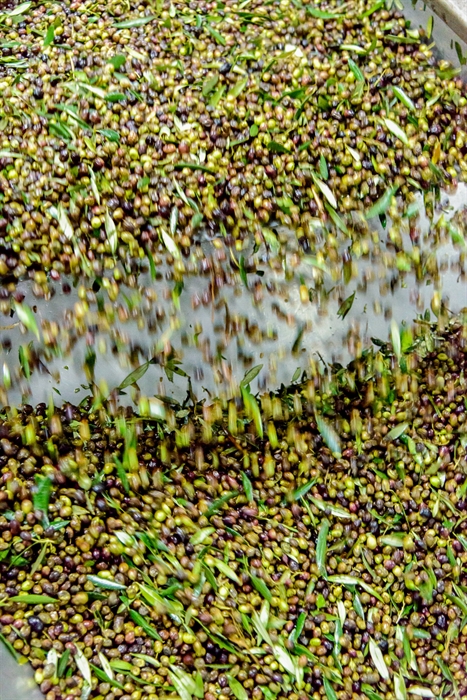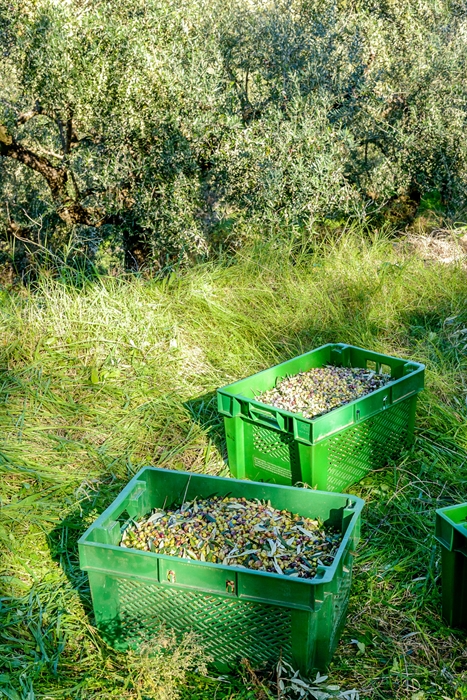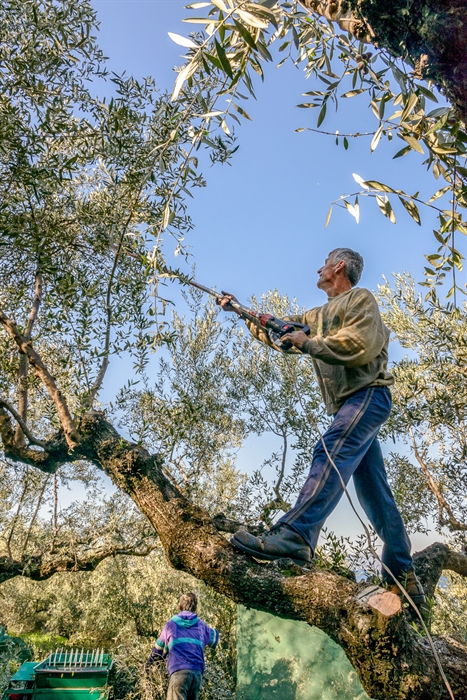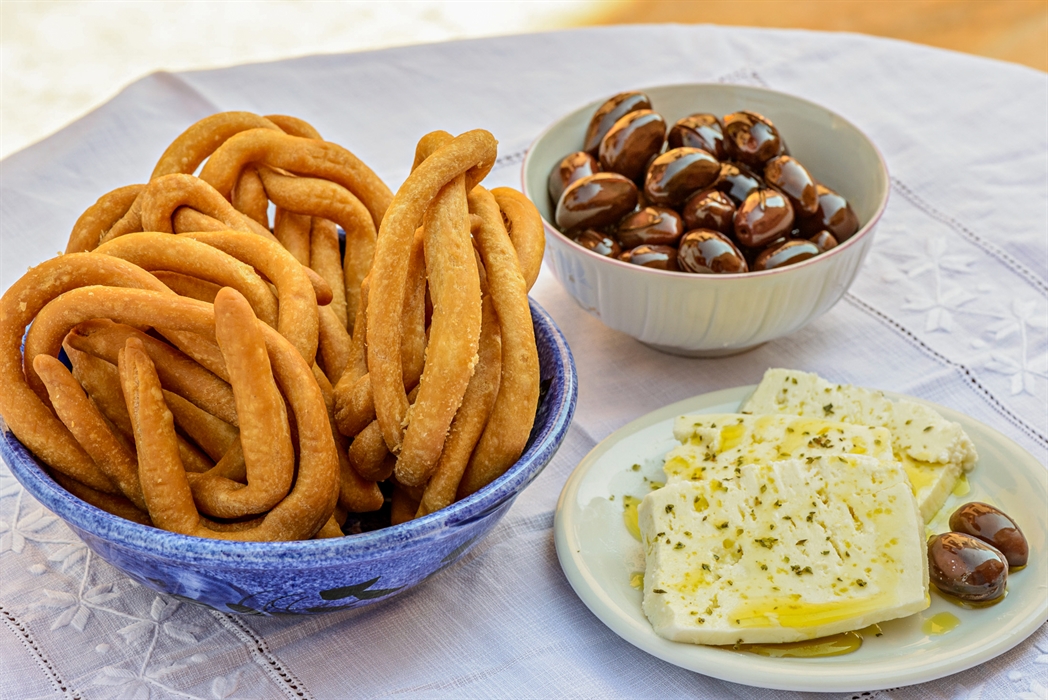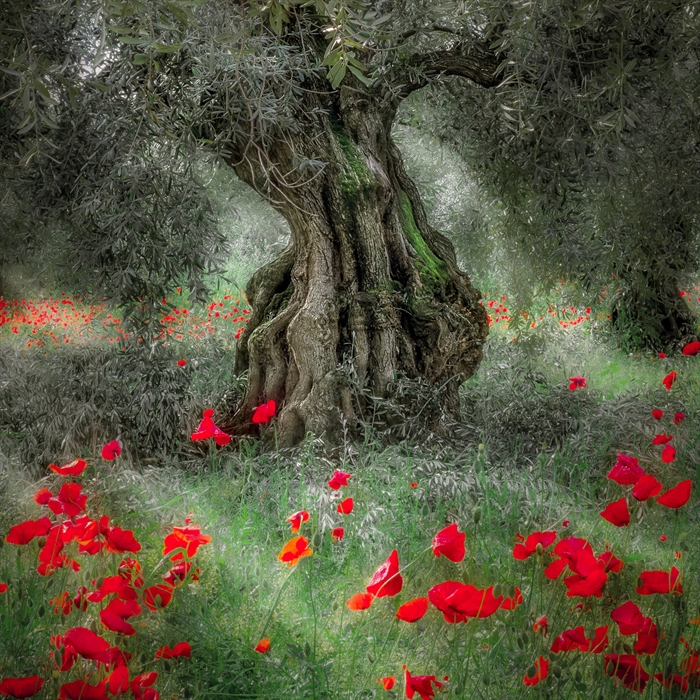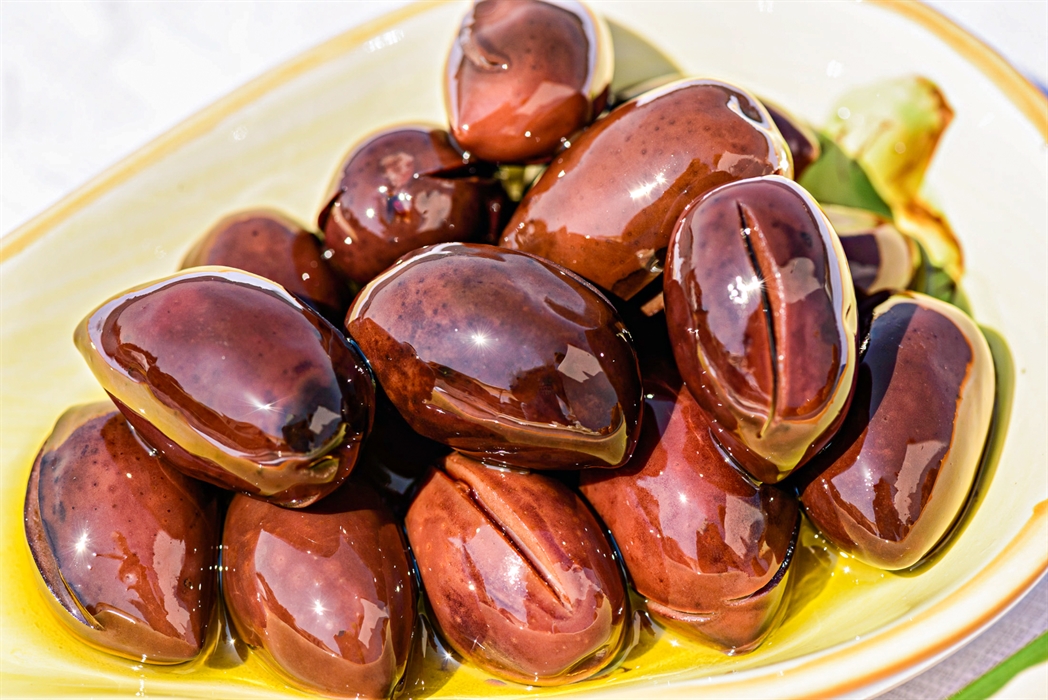Kalamata PDO olives and olive oil
Kalamata olives are probably the most famous olives in the world! You can buy them anywhere in Europe, but there is something extra special about enjoying Kalamata olives right here in their “home town”. Why not find out more by taking a tour round an old olive mill or going to a tasting event? After all, Kalamata olives have been given PDO status (Protected Designation of Origin), and of course "Kalamata" olive oil is every bit as good.
Kalamata olives (and Kalamata olive oil) are special! Their light fruity taste makes them a favourite all over the world, but there is something extra special about tucking into Kalamata olives right here in their “home town”. You’ll find them in salads, sauces, breads, pies and own as a snack to go with meze – but however you eat them you are dipping back into Greek history. The countryside of Messinia has long been defined by magical olive groves with their centuries-old olive trees. These ancient trees twist and turn like natural sculptures – and centuries of offering their fruit to mankind seem to have somehow given them a friendly, benevolent air. You can join organised trips to old olive mills and olive groves where, at the right time of year, you see the olives being harvested.
PDO "Kalamata" olive oil is equally famous and equally good. The main varieties in the area are koroneiki, matsolia and, to a lesser extent, mavloria. They are known for their purity and high nutritional value. Organic farming methods have been used in Messinia since the 1990s and now a considerable amount of the olive oil produced here is organic.
Olive and olive oil tasting. If you happen to be here in April for the Olive Oil and Olive Festival organised by the Agricultural Cooperative of Kalamata, or for one of the Local Gastronomy Days held in the central market in Kalamata, or indeed for a tasting event at Agricultural Cooperative olive mills, then you can join in and taste olives and olive oil to your heart’s content. Otherwise, you can look out for one of the many oil tasting and Messinian gastronomy events which are organised in various places throughout the region.
See information about the Olive Museum in Sparta.
Harvesting the olives. Olives are harvested by hand from November to February. It’s a tiring and labour-intensive job, with family members from all over the country often heading back home to help out. Usually people pick up the fallen olives and then spread tarps out around the trees. The branches are then “beaten” with sticks (although many people now use hand-held electric machines for this stage) so the ripe olives fall off and can be gathered. This is the most natural method and insures that the olives are damaged as little as possible.The olives are then cured in vinegar and stored in containers with olive oil and vinegar and maybe brine where they are kept until ready to eat.
A little history. From ancient times Messinia has been a favoured and fertile region growing a wide variety of agricultural products, but olives and olive oil have always been the real “stars”. In the ancient Olympics wreaths made from olive trees were presented to the winning athletes. The branches were cut with golden scissors from an olive tree near the temple of Zeus, by a "pais amphithalis", a boy whose parents were both alive. He would then take them to the temple of Hera and place them on a golden ivory table. The judges of the games would take them, make them into wreaths and offer them to the winners as prizes. And as you’ll have noticed, patterns of olive branches and olives frequently appear as a decorative motif on everyday items from ancient Greece.
Did you know that
Linear B tablets discovered in Pylos and Mycenae let us know how olives were used in the Mycenaean Centres of the Peloponnese. Thanks to them we know that olive oil was used in everyday life, in religious ceremonies, in commercial activities and in handicrafts (perfume making, weaving, etc.) during the Late Bronze Age. Olives were so important that three different ideograms are used to depict olives and olive oil.
In the Olympic games, the kotinos or the olive wreath, was awarded to Olympians as a prize
BOX
Olive oil has been made here for millennia, and the whole process of harvesting the olives and making the oil has not changed too much since ancient times. a) As now, the olives were cultivated and harvested. b) The olives were crushed to produce a pulp, much as today c) The pulp was then pressed to produce a liquid which was collected and the olive stones were discarded, and d) This liquid was separated into pure olive oil which was stored in jars and impure liquids which were unsuitable for consumption were separated off.
Location
Find the destination on the interactive map below.
Weather
Σχετικό περιεχόμενο χρηστών (UGC)
Ενημερωθείτε για ενδιαφέροντα θέματα γύρω από τον προορισμό μέσα από το περιεχόμενο των χρηστών μας
Discover 7 hidden gems of the Peloponnese
Many of you may have already visited some of the most renowned attractions…
TOP 10 archaeological museums in the Peloponnese
Olympia, Mycenae, Epidaurus, Diros Cave, Ancient Corinth, Messene and…
TOP 10 Castles in the Peloponnese
Castles galore! Mystras, Monemvasia, Palamidi, Methoni, Koroni,…
Newsletters
- About us
- FAQ's
- Map
- Tourism information centers
- Disclaimer
- Sitemap
- Our brand
- Media roum
- Adding your bussiness
- Corporate
- MICE

Peloponnese. Greece beyond the obvious





Design and creation from Cosmote
Marinas and Moorings
Diving centers
Get inspired
- Media gallery
- Blog
- The Peloponnese in the media
- Your feedback
- Users' general content
- Users' local products
- Users' events content
- Ask a local
More
- Accommodation
- Travel agencies
- Restaurants
- Services
- Destinations Map
- Weather
- Public transport
- Events
- Frequently asked questions
- Useful phones
- B2B
- Destination Data
- Contact

